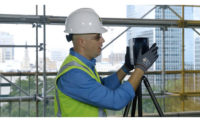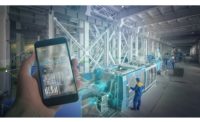Five Reasons to Invest in Vision Software

Machine vision systems are devices that capture and analyze visual information and are used to automate tasks that require “seeing.” More specifically, machine vision systems are used to detect defects, monitor production lines, guide assembly robots, and track, sort and identify parts. Machine vision systems are programmed to perform narrowly defined tasks, which may include counting objects on a conveyor, reading serial numbers and searching for surface defects. They are particularly favored over simple sensors or manual systems for visual inspections that require high-speed, high-magnification, 24-hour operation and repeatability of measurements.
In the past, inspection of parts was done either by labor or by using very simple sensors to identify known defects or conditions. On the one hand, labor is much smarter than any vision system, but the quality of manual inspections is never consistent. Simple sensors often require the parts being inspected to be in a very precise position. This solution is very rigid because if new defects show up, more sensors are required.
With machine vision, camera lens and image sensors are used to capture images. Vision software, the core element of the computer vision system, is “the man behind the curtain,” analyzing what is being seen and communicating information to other equipment. Vision systems also require lighting and are configured by connecting them to a display device such as a computer monitor.
Operators can purchase vision software to use with their own camera and processor, or they can purchase a standalone unit that combines camera, processor and software into a single package.
VARIETY OF FLAVORS
It also is available in an application configuration environment, where the operator creates the application by selecting and configuring vision tools. Here the operator configures the application flow and inputs/outputs and programming or scripting supports flexible solutions. Finally, vision software may be part of an application-specific solution, where the operator simply needs to adjust the existing vision functionality.

ACQUISITION FLEXIBILITY
The number one reason for using vision software is the flexibility it allows for the source of the image acquisition. The software can be used for both frame grabbers and direct connect cameras. It can be used for high-speed devices (640 x 480 at 205 frames per second (fps) and 1,280 x 1,024 at 500 fps) and for high resolution devices, including 4,872 x 3,248 (16 megapixels) and 12,288 x 1 devices.
It also can be used for a wide variety of special imagers, including thermal imaging, three-dimensional height profiling and X-ray imagers.
-
Thermal imaging. Food inspection is one key use for thermal imaging, including measuring meat temperature and checking for bruises. In the automotive arena, thermal imaging is used for manufacturing quality control of such systems as window defrosters and car seat heaters. In the semiconductor market, thermal imaging systems pick up on hot spots or bad solder areas. Finally, medical imaging systems use thermal imaging for fever detection and fluid control.
-
Three-dimensional height profiling (laser stripe). This type of special imaging device is frequently used when features are not visible with a standard camera. Target applications may include shape and volume inspection for food, glue bead or solder balls; surface inspection to detect gross scratches or dents; tests for product integrity to determine the presence or absence of a feature, or its completeness; alignment to show co-planarity and part orientation; and finally, optical character recognition on stamped or embossed surfaces.
-
X-ray. X-ray devices are used for quality inspection to show the presence or absence of a feature, as well as integrity of the part in question. They also are used for volume measurement in quality control of bread, fruits and meat. X-ray imagers can be used for metal, glass, stones, bones and rubber, and also can show void or missing products. They cannot be used for paper, wood, nutshells, pits, foil or aluminum metals.
POWERFUL VISION TOOLS
Color alignment has been on the market for some time, but new features that have the ability to tolerate rotation, scale and skew were previously only available on specialized tools. Objects can be located with synthetic geometries by using computer-aided design (CAD) drawings to train a model.
SCALABLE HARDWARE
Vision software can be run on hardware platforms scaled to the particular application, making them adaptable. For example, they can be run on ultra-small Intel Atom-based industrial PCs, which offer a relatively low price and an industrial design; desktop PCs, for the lowest price and highest performance; industrial rack PCs for maximum robustness; and finally, the smallest PC vision system can run on Atom-based smart cameras.SIMPLE INTEGRATION
For more complex applications, coding can be much more efficient than configuring the systems. Configurable systems have been designed to build simple applications. The benefit is a quick development of applications, even for beginners.
LOW HARDWARE COST
The primary business drivers for vision software are applications that are difficult to configure, those that require the highest flexibility and best performance, those that require multiple camera options or those that need the most customizable operator interface. Either force fit requirements into a configurable system with all its features and risk that compromises may have to be made on the application, or use the flexibility of vision software and tailor the solution to one’s needs-with some extra effort, of course. V&S
TECH TIPS
- Vision software is an extremely powerful tool for part location and robot guidance, part identification, inspection and gaging, and dimensional measurement.
- The number one reason for using vision software is the flexibility it allows for the source of the image acquisition.
- Vision software can be run on hardware platforms scaled to the particular application, making them adaptable.
Looking for a reprint of this article?
From high-res PDFs to custom plaques, order your copy today!









